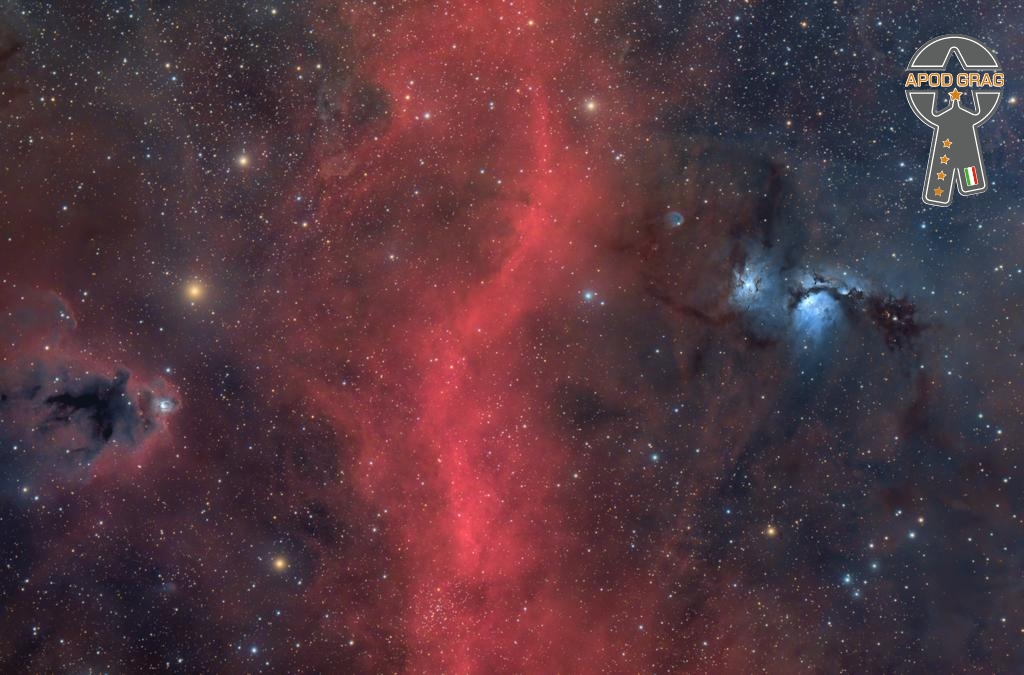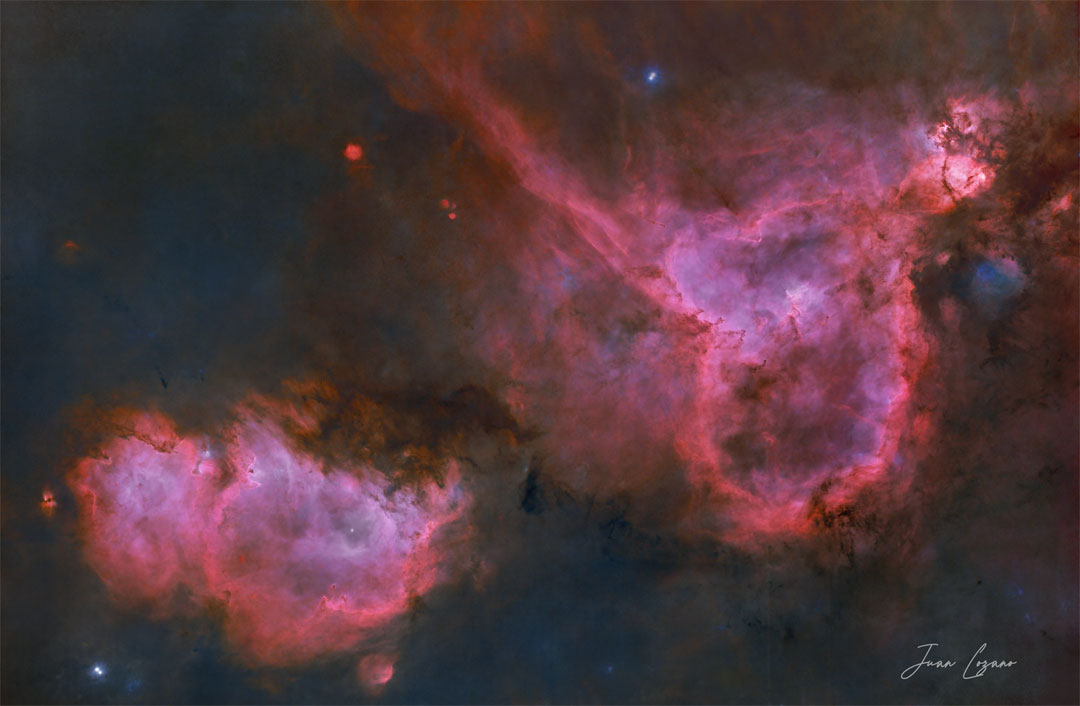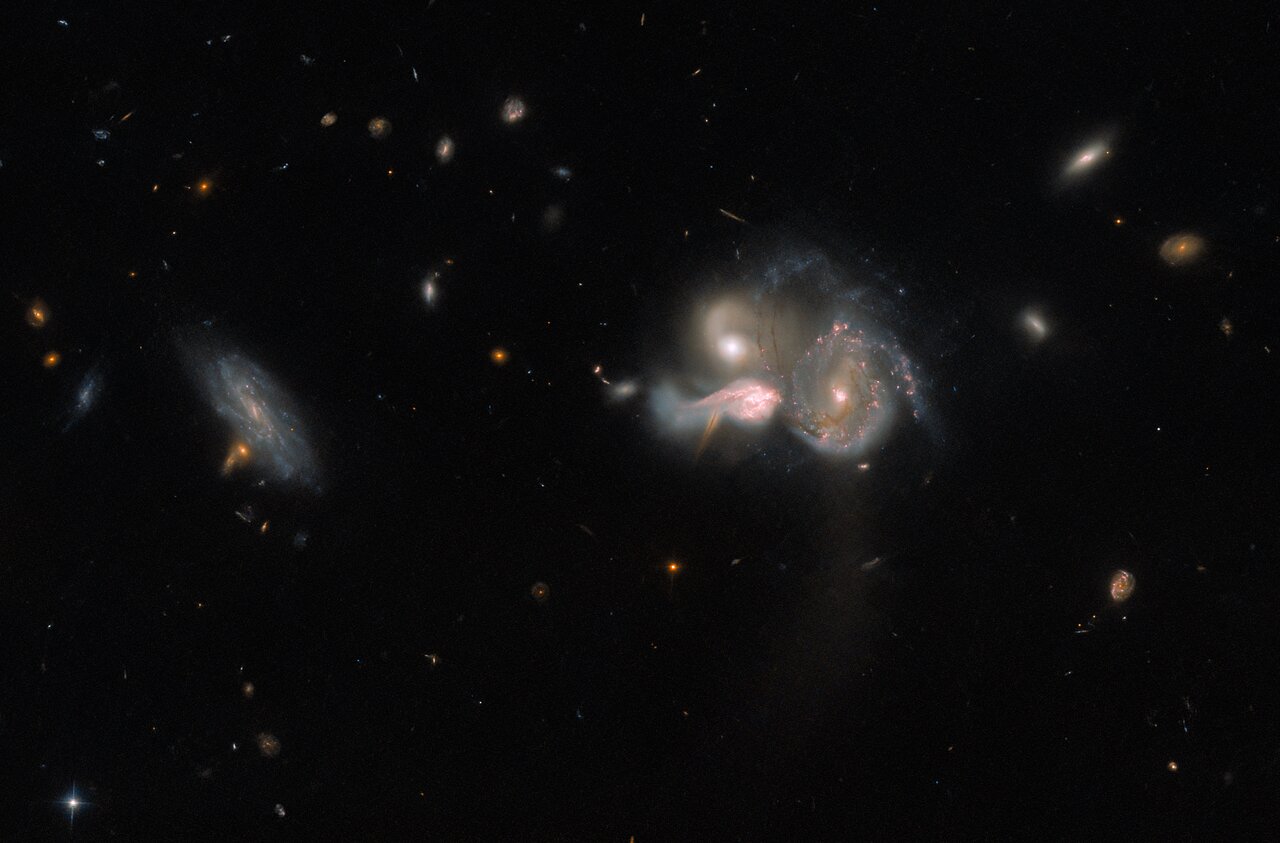Blog
William Ballard Doggett (February 16, 1916 – November 13, 1996) was an American pianist and organist. He began his career playing swing music before transitioning into rhythm and blues. Best known for his instrumental compositions “Honky Tonk” and “Hippy Dippy”, Doggett was a pioneer of rock and roll. He worked with the Ink Spots, Johnny Otis, Wynonie Harris, Ella Fitzgerald, and Louis Jordan.
Doggett was born in Philadelphia. During the 1930s and early 1940s he worked for Lucky Millinder, Frank Fairfax and arranger Jimmy Mundy. In 1942 he was hired as the Ink Spots‘ pianist and arranger.
In 1951, Doggett organized his own trio and began recording for King Records. His best known recording is “Honky Tonk“, a rhythm and blues hit of 1956, which sold four million copies (reaching No. 1 R&B and No. 2 Pop), and which he co-wrote with Billy Butler.
more...Giuseppe “Joe” Venuti (September 16, 1903 – August 14, 1978) was an American jazz musician and pioneer jazz violinist.
Considered the father of jazz violin, he pioneered the use of string instruments in jazz along with the guitarist Eddie Lang, a friend since childhood. Through the 1920s and early 1930s, Venuti and Lang made many recordings as leader and as featured soloists. He and Lang became so well known for their ‘hot’ violin and guitar solos that on many commercial dance recordings they were hired to do 12- or 24-bar duos towards the end of otherwise stock dance arrangements. In 1926, Venuti and Lang started recording for the OKeh label as a duet (after a solitary duet issued on Columbia), followed by “Blue Four” combinations, which are considered milestone jazz recordings. Venuti also recorded commercial dance records for OKeh under the name “New Yorkers”.
He worked with Benny Goodman, Adrian Rollini, the Dorsey Brothers, Bing Crosby, Bix Beiderbecke, Jack Teagarden, Frank Signorelli, the Boswell Sisters, and most of the other important white jazz and semi-jazz figures of the late 1920s and early 1930s. However, following Lang’s death in 1933, Venuti’s career began to wane, though he continued performing through the 1930s, recording a series of commercial dance records (usually containing a Venuti violin solo) for the dime store labels, as well as OKeh and Columbia, plus the occasional jazz small group sessions. He was also a strong early influence on western swing players like Cecil Brower. Many of the 1920s OKeh sides continued to sell and remained in print through 1935 when ARCdiscontinued the OKeh label and reissued selected sides on the 35-cent Vocalion label (the OKeh label was revived by CBS in 1940).
more...Messier 78 or M78, also known as NGC 2068, is a reflection nebula in the constellation Orion. It was discovered by Pierre Méchain in 1780 and included by Charles Messier in his catalog of comet-like objects that same year.
M78 is the brightest diffuse reflection nebula of a group of nebulae that includes NGC 2064, NGC 2067 and NGC 2071. This group belongs to the Orion B molecular cloud complex and is about 1,350 light-years distant from Earth. M78 is easily found in small telescopes as a hazy patch and involves two stars of 10th and 11th magnitude. These two B-type stars, HD 38563 A and HD 38563 B, are responsible for making the cloud of dust in M78 visible by reflecting their light.

Alistair Ian Campbell (born 15 February 1959) is an English singer and songwriter who was lead singer of the British reggae band UB40. As part of UB40, Campbell sold over 70 million records worldwide and toured the globe for 30 years. In 2008, Campbell left UB40 due to a dispute with band management and embarked on a solo career. In 2012, Campbell was announced as one of the three judges on the panel of the TV show New Zealand’s Got Talent. In August 2014, Campbell announced he had reunited with former UB40 bandmates Astro and Mickey to record a new album, Silhouette, released on 6 October 2014.
Alistair Ian Campbell was born in Birmingham, England. He is the brother of former bandmate Robin Campbell and former UB40 frontman Duncan Campbell, and is a son of the late Scottish folk singer Ian Campbell.
more...Melissa Manchester (born February 15, 1951) is an American singer, songwriter and actress. Since the 1970s, her songs have been carried by adult contemporary radio stations. She has also appeared on television, in films, and on stage.
Manchester was born in the Bronx, a borough of New York City, into a musical family. Her father, David Manchester, was a bassoonist for the New York Metropolitan Opera for three decades. Her mother was one of the first women to design and found her own clothing firm, Ruth Manchester Ltd. The Manchesters are of Jewish origin.
Manchester started a singing career at an early age. She learned the piano and harpsichord at the Manhattan School of Music, began singing commercial jingles at age 15, and became a staff writer at age 17 for Chappell Music while attending Manhattan’s High School of Performing Arts.
She studied songwriting at New York University with Paul Simon when she was 19. Manchester played the Manhattan club scene, where Barry Manilow, a friend and fellow jingles singer introduced her to Bette Midler. In 1971, she became a member of the Harlettes, the back-up singers for Midler, which she co-created with Manilow.
more...Henry Threadgill (born February 15, 1944) is an American composer, saxophonist and flautist. He came to prominence in the 1970s leading ensembles rooted in jazz but with unusual instrumentation and often incorporating other genres of music. He has performed and recorded with several ensembles: Air, Aggregation Orb, Make a Move, the seven-piece Henry Threadgill Sextett, the twenty-piece Society Situation Dance Band, Very Very Circus, X-75, and Zooid.
He was awarded the 2016 Pulitzer Prize for Music for his album In for a Penny, In for a Pound, which premiered at Roulette Intermedium on December 4, 2014
Threadgill performed as a percussionist in his high-school marching band before taking up baritone saxophone, alto saxophone, and flute. He studied at the American Conservatory of Music in Chicago, majoring in piano, flute, and composition. He studied piano with Gail Quillman and composition with Stella Roberts.[3] He was an original member of the Experimental Band,a precursor to the AACM in his hometown of Chicago, and worked under the guidance of Muhal Richard Abrams, before leaving to tour with a gospelband. In 1967, he enlisted in the U.S. Army, playing with a rock band in Vietnam during the Vietnam War in 1967 and 1968. He was discharged in 1969.
more...Harold Arlen (born Hyman Arluck; February 15, 1905 – April 23, 1986) was an American composer of popular music, who composed over 500 songs, a number of which have become known worldwide. In addition to composing the songs for the 1939 film The Wizard of Oz (lyrics by Yip Harburg), including “Over the Rainbow“, Arlen is a highly regarded contributor to the Great American Songbook. “Over the Rainbow” was voted the 20th century’s No. 1 song by the RIAA and the NEA.
Arlen was born in Buffalo, New York, the child of a Jewish cantor. His twin brother died the next day. He learned to play the piano as a youth, and formed a band as a young man. He achieved some local success as a pianist and singer before moving to New York City in his early twenties, where he worked as an accompanist in vaudeville and changed his name to Harold Arlen. Between 1926 and about 1934, Arlen appeared occasionally as a band vocalist on records by The Buffalodians, Red Nichols, Joe Venuti, Leo Reisman, and Eddie Duchin, usually singing his own compositions.
In 1929, Arlen composed his first well-known song: “Get Happy” (with lyrics by Ted Koehler). Throughout the early and mid-1930s, Arlen and Koehler wrote shows for the Cotton Club, a popular Harlem night club, as well as for Broadway musicals and Hollywood films. Arlen and Koehler’s partnership resulted in a number of hit songs, including the familiar standards “Let’s Fall in Love” and “Stormy Weather“. Arlen continued to perform as a pianist and vocalist with some success, most notably on records with Leo Reisman‘s society dance orchestra.
more...James “Kokomo” Arnold (February 15, 1896 or 1901 – November 8, 1968) was an American bluesmusician. A left-handed slide guitarist, his intense style of playing and rapid-fire vocal delivery set him apart from his contemporaries. He got his nickname in 1934 after releasing “Old Original Kokomo Blues” for Decca Records, a cover version of Scrapper Blackwell‘s blues song about the city of Kokomo, Indiana.
Arnold was born in Lovejoy’s Station, Georgia. Most sources give the date his birth as 1901, but the researchers Bob Eagle and Eric LeBlanc give the date as 1896, on the basis of information in the 1900 census. He learned the basics of playing the guitar from his cousin, John Wiggs.
more...https://www.youtube.com/watch?v=_m_nZXS6-Fs&list=PLEB3LPVcGcWZ0hsQ5_jgSMhawAnDzy1io&index=1
more...two bright emission nebulas nicknamed Heart and Soul can be found. The Heart Nebula, officially dubbed IC 1805and visible in the featured image on the upper right, has a shape reminiscent of a classical heart symbol. The shape is perhaps fitting for Valentine’s Day. The Soul Nebula is officially designated IC 1871 and is visible on the lower left. Both nebulas shine brightly in the red light of energized hydrogen, one of three colors shown in this three-color montage. Light takes about 6,000 years to reach us from these nebulas, which together span roughly 300 light years. Studies of stars and clusters like those found in the Heart and Soul nebulas have focused on how massive stars form and how they affect their environment.

more...
Timothy Charles Buckley III (February 14, 1947 – June 29, 1975) was an American musician. His music and style changed considerably through the years. Buckley began his career based in folk music, but his subsequent albums experimented with jazz, psychedelia, funk, soul, the avant-garde, and an evolving voice-as-instrument sound. He died at the age of 28 from a heroin and morphineoverdose, leaving behind sons Taylor and Jeff.
Tim Buckley was born in Washington, D.C. on Valentine’s Day, February 14, 1947, to Elaine (née Scalia), an Italian American, and Timothy Charles Buckley Jr., a decorated World War II veteran and son of Irish immigrants from Cork. He spent his early childhood in Amsterdam, New York, an industrial city about 40 miles (64 km) northwest of Albany. At five years old, Buckley began listening to his mother’s progressive jazz recordings, particularly Miles Davis.
more...erl Saunders (February 14, 1934 – October 24, 2008) was an American multi-genre musician who played piano and keyboards, favoring the Hammond B-3 console organ.
Born in San Mateo, California, United States, Saunders attended Polytechnic High School in San Francisco. In his first band in high school was singer Johnny Mathis. He served in the U.S. Air Force from 1953 to 1957. He worked as musical director of the Billy Williams Revue and served in a similar capacity in Oscar Brown Jr.‘s off-Broadway show, Big Time Buck White.
He gained notice in the 1970s when he began collaborating with Jerry Garcia, with whom he had begun playing in 1971 at a small Fillmore Street nightclub called The Matrix. He sat in with the Grateful Dead, and co-founded the Saunders/Garcia Band which produced three albums, and which became the Legion of Mary, with the addition of Martin Fierro (sax) in 1974. It disbanded the following year, but he and Garcia continued to collaborate in the band Reconstruction during 1979, collaborating with Ed Neumeister (trombone), Gaylord Birch (drums) and John Kahn (bass).
He led his own band as Merl Saunders and Friends, playing live dates with Garcia, as well as Mike Bloomfield, David Grisman, Michael Hinton, Tom Fogerty, Vassar Clements, Kenneth Nash, John Kahn and Sheila E. He also collaborated with Grateful Dead percussionist Mickey Hart in the band High Noon.
Saunders took the lead in reintroducing Jerry Garcia to his guitar, after Garcia suffered a diabetic coma in the summer of 1986.
more...Samuel Gene Maghett (February 14, 1937 – December 1, 1969), known as Magic Sam, was an American Chicago blues musician. He was born in Grenada County, Mississippi, and learned to play the blues from listening to records by Muddy Waters and Little Walter. After moving to Chicago at the age of 19, he was signed by Cobra Records and became well known as a bluesman after the release of his first record, “All Your Love”, in 1957. He was known for his distinctive tremolo guitar playing.
The stage name Magic Sam was devised by Sam’s bass player and childhood friend Mack Thompson at Sam’s first recording session for Cobra, as an approximation of “Maghett Sam”. The name Sam was using at the time, Good Rocking Sam, was already being used by another artist.
Maghett moved to Chicago in 1956, where his guitar playing earned him bookings at blues clubs on the West Side. He recorded singles for Cobra Records from 1957 to 1959, including “All Your Love” and “Easy Baby”. They did not reach the record charts but had a profound influence, far beyond Chicago’s guitarists and singers. Together with recordings by Otis Rush and Buddy Guy (also Cobra artists), the West Side Sound was a manifesto for a new kind of blues. Around this time Magic Sam worked briefly with Homesick James Williamson. His career was cut short when he suddenly died of a heart attack in December 1969.[2] He was 32 years old. Magic Sam was buried in the Restvale Cemetery, in Alsip, Illinois. He was survived by his wife, Georgia Maghet Magic Sam gained a following before being drafted into the U.S. Army. He served six months in prison for desertion and received a dishonorable discharge.
more...A spectacular trio of merging galaxies in the constellation Boötes takes centre stage in this image from the NASA/ESA Hubble Space Telescope. These three galaxies are set on a collision course and will eventually merge into a single larger galaxy, distorting one another’s spiral structure through mutual gravitational interaction in the process. An unrelated foreground galaxy appears to float serenely alongside the collision, and the smudged shapes of much more distant galaxies are visible in the background. This colliding trio — known to astronomers as SDSSCGB 10189 — is a relatively rare combination of three large star-forming galaxies lying within only 50 000 light-years of one another. While that might sound like a safe distance, for galaxies this makes them extremely close neighbours! Our own galactic neighbours are much further away; Andromeda, the nearest large galaxy to the Milky Way, is more than 2.5 million light-years away from Earth. This observation was designed to help astronomers understand the origin of the largest, most massive galaxies in the universe. These galactic behemoths are called Brightest Cluster Galaxies (BCGs) and — as the name suggests — are defined as the brightest galaxies in any given galaxy cluster. Astronomers suspect that BCGs form through the merger of large, gas-rich galaxies like the ones in this image. They turned to Hubble’s Wide Field Camera 3 and Advanced Camera for Surveys to investigate this galactic trio in painstaking detail, hoping to shed light on the formation of the Universe’s most massive galaxies. [Image description: Three galaxies stand together just right of centre. They are close enough that they appear to be merging into one. Their shapes are distorted, with strands of gas and dust running between them. Each is emitting a lot of light. Further to the left is an unconnected, dimmer spiral galaxy. The background is dark, with a few smaller, dim and faint galaxies and a couple of stars.

More Posts
- World Music with Paco de Lucia
- Daily Roots with Pat Kelly
- The Cosmos with Corona Australis
- Billy Hart Day
- John Mayall Day
- Billy Strayhorn Day
- World Music with Brigada Victor Jara
- Daily Roots with the Reggae Boys
- The Cosmos with IC 1871
- Randy Newman Day
- Gato Barbieri Day
- Roy McCurdy Day
- Gigi Gryce Day
- World Music with Ciganos D’Ouro
- Daily Roots with the Melodians
- The Cosmos with Sh2-239
- Jimi Hendrix Day
- Lyle Mays Day
- Randy Brecker Day
- World Music with Danongan Kalanduyan
